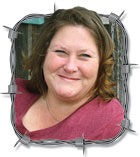By the end of the Civil War, folks had eaten every hog and chicken in the United States. Confederate soldiers who walked home after the armistice from Maryland and Virginia to Arkansas said they never heard a rooster crow. The industrialized north was prospering and wanted protein. Texas was broke and so were the people. This is Part One of the era of cattle drives:
After the Civil War, soldiers began to come home to the Lone Star state. There were lots of wild longhorns. These cattle were more like a deer mixed with a Mexican fighting bull than a normal bovine. They stayed in the thorny brush thickets by day and grazed in the open at night. No one had had a roundup in years while all the men were gone fighting the civil war. Besides, they were only worth a pittance for their hide and tallow. Folks close to the coast could sell some salted beef — the market for Texas cattle byproducts was hardly worth the effort.
During the first year after the war, a few brave souls drove cattle herds up through western Arkansas to central Missouri. The flint rock hills lamed them. The railhead at Sedalia, Mo., was about half way up the state. These first longhorn carried ticks that bore Texas Fever. Texas cattle were immune to it. The ticks fell off along the way and crawled on the small farmers' stock and their cattle died. So soon the alarm went off that these wild cattle crossing through their country had diseases that wiped out their own stock.
The Ozarks in those times were full of bushwhackers and desperate people. So between the irate farmers and the outlaws, it was dangerous to use this route. Besides, the flint rock business made many of their cattle lame, and few good reports came back about these drives. The only good thing was that these disease-bearing ticks could not survive the cold weather. One cold winter and the cattle were tick free of that particular species.
A farmer from western Illinois, Joe McCoy set out on a mission in 1865 that would change history. Corn belt farmers had cribs full of corn that was for the most part worthless. They needed large-framed cattle to feed and fatten for the eastern market. So this farmer set out to find a railroad that would provide him stock cars and haul these cattle from some point west of the tick deadline back to the Midwest farmer. In his muddy shoes and store bought suit, McCoy did not impress many railroad tycoons. At last the president of Kansas Pacific told him to find some place in Kansas west of the “deadline” and he’d do that. Build a siding and furnish him railcars.
McCoy found land on the K-P tracks, he could afford, in a small community called Abilene, Texas. He notified the railroad and began building loading pens in the winter of '66. He hired a surveyor and his sons to plow a furrow that winter from Abilene to the Arkansas River and stack sod as markers. That’s a distance of about a hundred miles. When the U.S. Army abandoned the western forts in Texas before the Civil War, they brought a thousand wagons of arms and supplies across the Red River and up in what is now Oklahoma to Council Oaks, the site of a trading post that formerly belonged to the Chouteau family. They left those tracks in the waving grass. Half Cherokee, Jesse Chisholm, Indian trader, was using that site for trading with the plains Indians, but when the war started Jesse moved his family and main trading post up to the Salt Fork of the Arkansas to stay clear of the fighting. However he went back and forth on that road to trade with the Comanche and Kiowa.
Today if you take highway I-25 north from San Antonio to Fort Worth, Texas to Oklahoma City, Okla., next Wichita, Kan., and then to Salina, Kan., (Abilene, Texas, is just east of Salina) you have made the cattle trail they used.
Joe McCoy sent men with posters to Texas telling how he would have buyers and rail cars. His directions were to "take the old wagon tracks from the Red River Crossing to Council Oaks, then use Jessie’s tracks from there to the Arkansas River and follow my furrow to Abilene" — Joe McCoy.
It was several years before they officially named the trail. Drovers began to call it, “Jesse’s Trail.” Chisholm was the son of a Scotch Irish trader, a man who most folks detested. There are numerous cases of his bad dealings on the Arkansas law books. “Chisholm arrived in court today with his numerous Indian wives and their babies,” was an excerpt.
Jesse Chisholm the son spoke many Indian dialects, and French as well. He was hired by the government to help negotiate treaties with various tribes. His name appears on many of these documents because Indians trusted him. Along with members of the Chouteau family who represented the Osage, he helped end the war between them and the Cherokees. It said on his grave stone, “He never turned a man away that came to his door.”
He died in 1868 from eating donuts cooked in rancid bear grease that an Indian woman had stored in a brass vessel. A Comanche chief mourned for two weeks at his burial site.
Jesse Chisholm never drove a herd over that trail. But he befriended many drovers and travelers. So they called it the Chisholm Trail. Millions of head of cattle came up it.
Next issue, I’ll tell you more about the workings of the cattle drives.
Western novelist Dusty Richards and his wife Pat live on Beaver Lake in northwest Arkansas. For more information about his books, call 1-866-532-1960 or email him at [email protected].






